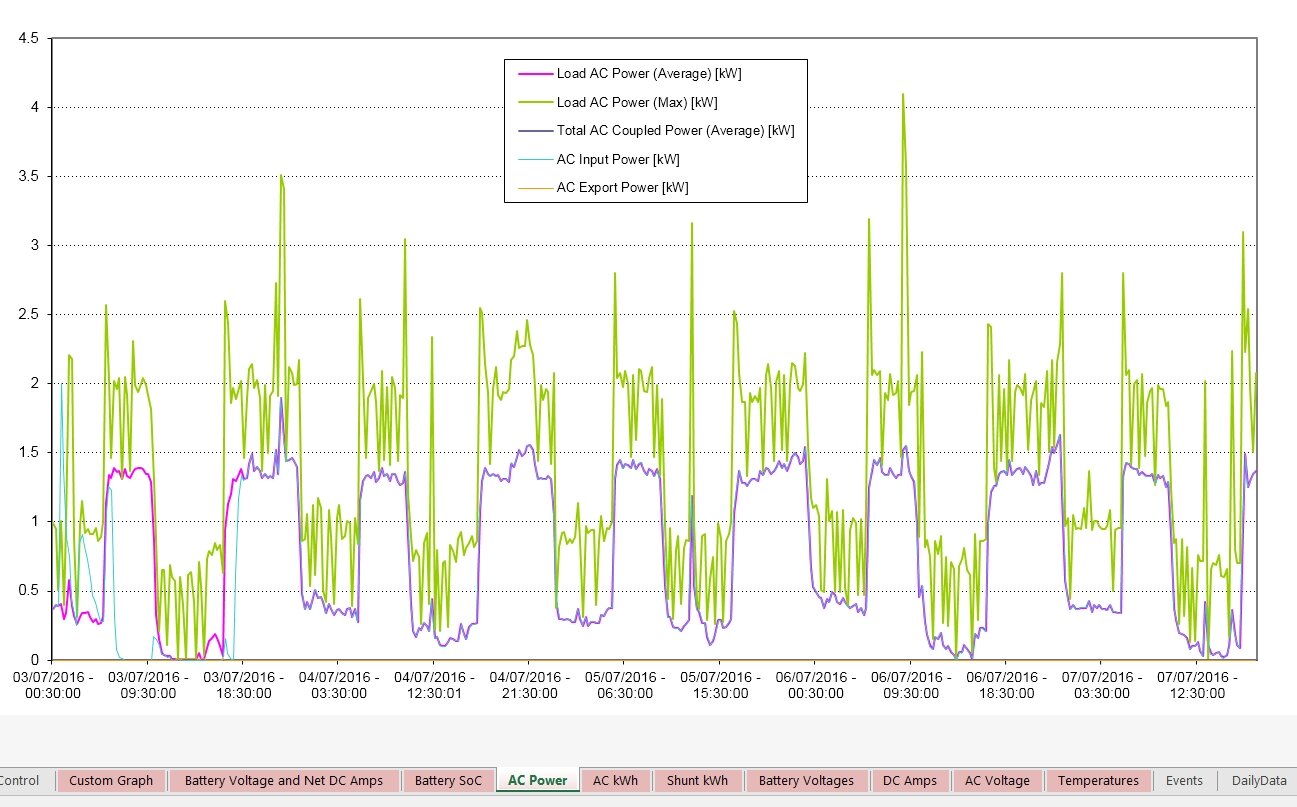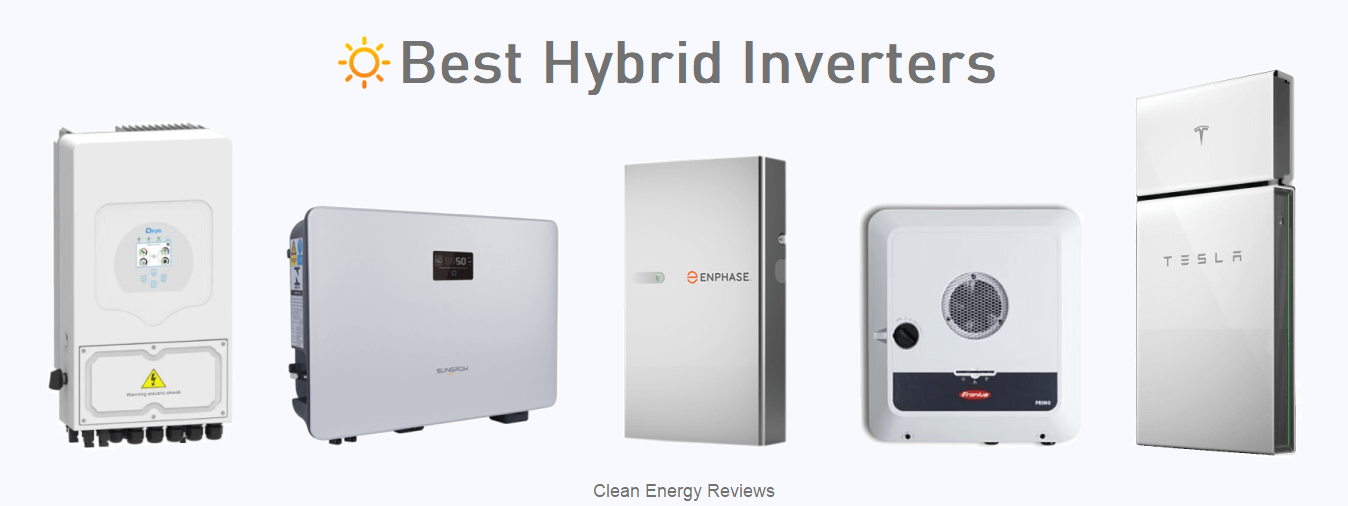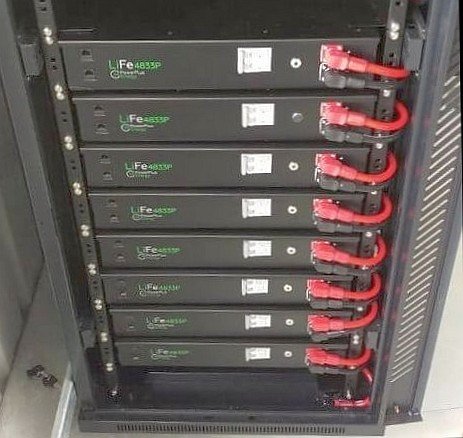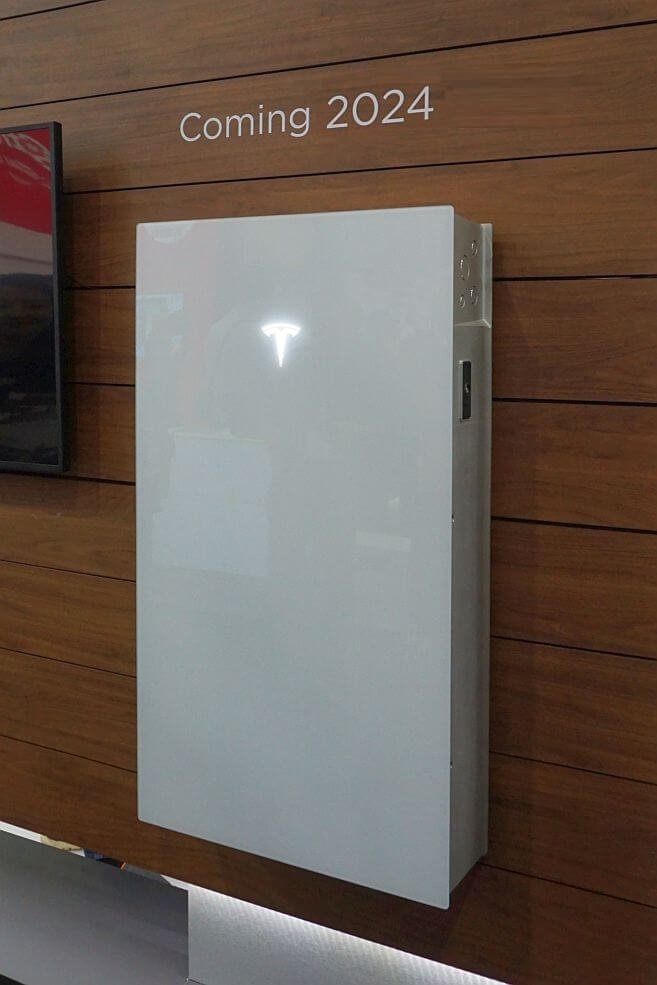Selectronic SP PRO - Hybrid off-grid Inverter Review
Selectronic, based in Melbourne, Australia, was founded back in 1964 and has been manufacturing electronics and power conversion equipment for over 50 years. Over this time, the company has evolved to become a world leader in energy storage management systems and recently opened a much larger manufacturing facility to cater for the increasing demand.
To say Selectronic is modest is an understatement, the company manufactures what is arguably the most advanced battery inverter-charger in the world with a relatively small team of designers and engineers. In recent years, Selectronic has grown significantly and now exports to countries around the globe, including Germany, which is known for manufacturing some of the best solar equipment. Part of the reason for the companies success is that, unlike most other inverter manufacturers, Selectronic only focuses on designing and manufacturing high-performance, energy storage inverter chargers.
Selectronic manufacture a range of sophisticated multi-mode battery inverter-chargers available in a variety of sizes for off-grid and on-grid energy storage residential and commercial applications.
Selectronic doesn’t manufacture common solar inverters but rather a range of multi-mode inverter-chargers called the SP PRO. These inverters are designed to be used in both off-grid and on-grid battery installations where battery storage and power management is required. However, they are capable of much more using possibly the most advanced software of any inverter on the market today.
NOTE: the Selectronic SP PRO is available in most overseas markets, except the United States.
What is the SP PRO?
Before we go into detail about the SP PRO, let's be clear about exactly what it is: The SP PRO is essentially an advanced battery inverter-charger. Of course, there are many battery inverter-chargers on the market, but where the SP PRO really shines is when it comes to energy management due to the advanced features and software which drives it. The SP PRO can be set up as one or more of the following systems:
Grid-connected battery backup system (UPS)
Hybrid solar energy storage system
Stand-alone (off-grid) power system
Commercial energy management system
There are also various configuration options such as AC or DC coupling using one or more solar inverters or solar charge controllers to create a modular solar energy storage system. Plus, the SP PRO can function as a commercial energy management system to reduce peak loads (peak lopping). To top it off it can also be used to retrofit or add batteries to any existing grid-connected solar installations via AC coupling. The SP PRO can function with any generic grid-tied solar inverter but offers more functionality when coupled with a Selectronic Certified solar inverter as explained in more detail below.
Battery Options
The SP PRO range was originally designed for use with deep-cycle lead-acid battery banks of all varieties - flooded, sealed, Gel or AGM, and voltages of either 24V, 48V or 120V. In order to accurately monitor and charge deep cycle battery systems, Selectronic developed a range of advanced battery sensors into the SP PRO to ensure accurate charging. A great example is mid-string monitoring which can detect faults in lead-acid batteries strings before a faulty cell or cells can cause further issues.
Compatible Lithium batteries
As lithium battery systems have evolved to become the preferred battery chemistry for most applications, the list of compatible batteries has grown significantly to include many of the popular managed* lithium battery systems including:
LG chem RESU
LG chem rack-mount
BYD LVL Premium
BYD LVs
Sonnenschein
PylonTech US2000
PylonTech US3000
* Managed lithium battery systems must be compatible with the SP PRO to pass on battery state of charge (SOC) and other data in order to function correctly, increase battery life and maintain the correct charge/discharge rates.
Self-managed Lithium Batteries
Recently, the new generation, high-performance self-managed lithium battery systems have taken over much of the market and the SP PRO is compatible with all the leading brands including:
Compatible self-managed lithium battery systems - No dedicated comms required
Simpliphi PHI
PowerPlus Energy
GenZ
Discover AES
Self-managed lithium batteries operate independently since the battery BMS takes care of the battery charging and does not need to communicate with the inverter directly. However, like any inverter, the SP PRO must be programmed with the correct settings to match the battery. Self-managed lithium batteries are perfect for retro-fitting into systems and replacing old lead-acid battery banks.
Off-grid solar power system with the Selectronic SP PRO, Powerplus Energy self-managed lithium battery system and AC coupled with a Fronius Primo solar inverter. See the best off-grid system review.
Expensive Price Tag
The SP PRO is one of the most expensive multi-mode inverters on the market coming in around 20-30% more expansive than an SMA sunny island and Schneider Electric XW+. However, when comparing like for like continuous and peak power ratings, the SP PRO is equivalent to a much larger inverter. Also, it does not require expensive add-on battery monitors, energy meters or external relays to operate, so total system cost is quite competitive.
Powerful off-grid Inverter
In Australia, the SP PRO is regarded among solar designers and installers as the leading inverter for off-grid and stand-alone solar power systems. The huge surge power output rating, advanced sensors, clever monitoring, AC and DC coupling capability and multiple battery options including lithium and lead-acid make it the first choice for any serious off-grid installation.
Hybrid Inverters Vs the SP PRO
So how does the SP PRO compare with the new hybrid battery inverters and energy storage systems on the market, the most common being the all-in-one inverters which manage both the solar and battery charging on one unit?
Cheaper all-in-one hybrid inverters, while cheap, simple and compact, do have several limitations, the main drawback being the limited loads or appliances which can be powered in off-grid or EPS mode. Hybrid inverters are transformerless which means they have very limited surge power ratings and typically struggle at higher temperatures. The SP PRO on the other hand has a very large transformer that can handle high continuous and surge loads under a wide variety of conditions and temperatures.
Unlike most hybrid inverters the SP PRO is unique in that it can pass through additional power from the grid or a back-up generator (or both with an add-on contactor) and has one of the highest pass through power ratings of any single phase inverter on the market at 63A or 15kW. This means in most applications the entire home or business can be managed and backed up by the inverter. Most hybrid inverters, on the other hand, can only back up smaller basic loads or essential circuits.
Cost Vs Features - If you are looking to install a simple battery system for self-use and limited backup power, or if you are on a very tight budget a common all-in-one hybrid inverter will be a more economical option. See our guide to selecting an off-grid or hybrid inverter here.
Typical configuration - Solar AC coupled hybrid energy storage system
Oversizing Solar
The SP PRO can be both AC and DC-coupled, meaning the solar PV size can be easily expanded if required by coupling additional solar inverters or MPPT solar charge controllers. This also gives much greater flexibility in how the battery is used, especially if there are both DC and AC loads.
Unlike other inverter-chargers, Selectronic is not limited to the 1:1 rule when AC-coupled with solar inverters; this is where the AC-coupled solar inverter size cannot be greater than the inverter-charger rating. For example, with the 5kVA Victron Multiplus inverter, a maximum 5kW Fronius solar inverter can be used. However, with the SP PRO, if you use a ‘Selectronic certified’ or ‘Scert’ solar inverter such as a Fronius Primo, Symo, or ABB (Fimer), then you have a 2:1 ratio, plus more solar can be DC-coupled if required. Note, that the Scert inverters have to be ordered and cost a few hundred more than the standard inverter.
Note: If the SP PRO is used with a generic AC-coupled solar inverter, then the 1:1 rule applies, as it cannot control the output of the solar inverter. Also, for off-grid systems, only a Scert solar inverter can be used with the SP PRO.
Commercial Applications
The SP link monitoring and programming software
The SP PRO is generally the product of choice for high-end off-grid and hybrid systems. However, for larger commercial solar with battery backup situations it did, until recently have one main limitation, this being it wasn’t capable of coupling more than one inverter per phase. This new feature, known as PowerChain, enables up to four SP PRO inverters to connected per phase. At present, the largest SP PRO has a huge 20kW continuous output per phase which is very high and more than adequate for many commercial installations. In addition, the SP PRO can AC couple solar PV at double its rated capacity, so a 20kW inverter can manage up to 40kW solar array. So a large 60kW 3-phase system can handle up to 120kW of solar, plus additional solar capacity is able to be connected via DC coupling if required.
This is a powerful inverter, designed to manage a wide range of power sources and supply very high continuous loads to ensure uninterruptible power supply (UPS), whether you are completely off the grid, connected to an unreliable electricity grid, or want an emergency power supply in the event of the occasional blackout or natural disaster. The huge surge load capability and optional external pass-through power capability (up to a huge 60kW or 250A per phase) of the SP PRO inverters make them suitable for a wide variety of installations.
Advanced Software and Monitoring
SP-Link software - One of the many configuration pages
Having personally designed and installed hundreds of hybrid and off-grid energy storage systems I would consider the stand out feature of the SP PRO the advanced software package. Having a robust and reliable grid-interactive or off-grid inverter is great but it is the software that is really responsible for controlling the system. Selectronic's software called SP-Link is a free, customisable software package that includes some 220+ settings to enable complete control. This is particularly important with the many new battery technologies on the market which require unique charge settings and monitoring. Another bonus that is often overlooked by many manufactures is backwards compatibility. Almost all new software and firmware upgrades released by Selectronic are compatible even with the first model SP PRO released in 2008.
Latest features and advancements
The latest generation SP PRO’s feature more advanced communications for multi-phase system operation and ‘managed’ lithium battery connection as standard (previously required a new communications card). Plus the 3.5kW, 48V SP PRO was released. This new inverter (Model SPMC480) is sized for smaller hybrid applications which want to take advantage of the many lithium 48V battery options. Another improvement is the AC Coupling recovery mode which allows easy battery recharge from AC Coupled PV in the event of low battery cut-out.
More features and advancements:
Remote configuration and access to SP.Link through Select.Live
Fronius Symo inverters are now Selectronic Certified (8.2kW to 15kW)
PowerChain technology - Parallel inverter operation
PowerChain Technology
The latest advancement is the new Powerchain technology which allows multiple SP PRO’s to work in parallel. This was one of the few limitations of the SP PRO and something that has been on the wish list for many installers for a long time.
Powerchain provides non-fluctuating voltage and frequency (with no ripple) and can deliver up to 240kW of power using up to 12 of the 20kW SP PRO inverters (4 per phase). Combined with AC coupled solar, this allows up to 480kW of PV power, or well over 0.5MW of PV with oversizing factored in. Another bonus is Powerchain installation is very simple with “plug and play” linking between inverters. No hubs, shunts or complex wiring is required.
The new Powerchain technology allows inverters to operate in parallel and AC coupled with up to 225kW of PV inverters using Fronius Symo inverters, or 480kW of PV using the 40kW SelectSun inverters.
Monitoring and control via Select live
In early 2018, Selectronic released an add-on device called the Select.live. This small communication unit uses a cloud portal to monitor your system from anywhere in the world in real-time and provides information about the system/s energy generation, consumption and provides easy to read graphs and systems status information. However, it is lacking some details including battery voltage and individual phase loads. Hopefully, this will be addressed in the near future along with access to remote control and programming options.
A recent much-needed addition to Select.live, which is a lifesaver, is the ability to allow access with the SP.link software to enable remote configuration and setting changes from anywhere in the world.
System monitoring via the Select.live app - Soon to enable advanced remote access to SP.Link
Additional Features
The deeper you look into the SP PRO the more features you seem to find, incorporating 4 relay outputs for controlling loads, to the multiple digital inputs and outputs it can be used much like a computer PLC controller. Then there are the unique features like system pre-start for capacitor charging and mid-string monitoring, used for warning if there is a faulty cell in a large battery bank (lead-acid gel or AGM), a feature which no other inverter on the market currently has built-in. This really goes to show what a relatively small company can achieve when it focuses on developing a core product.
INSIDE THE SP PRO - AC & DC Connections
Wrap up - Summary
The Australian made Selectronic SP PRO inverters have proven to be extremely reliable and highly regarded by installers and customers alike. This is backed up by the many 20+ year old off-grid installations around the world operating with older generation Selectronic inverters.
The great quality, high continuous and surge power ratings, advanced monitoring features, and flexibility with both AC & DC coupling options make this one of the best energy storage inverters on the market today. In addition, the built-in 63A pass-through power rating, clever software, four relays, digital I/O controls, and compatibility with leading lithium and VRLA batteries give the SP PRO a list of features far greater than even the best European or US-made battery inverter-chargers.
If you are looking to install a powerful and reliable off-grid or hybrid installation, then the SP PRO series would be hard to pass by. The price may be premium but when you are managing battery storage systems worth many thousands then it is easy to justify.
See the latest SP PRO Specifications data sheet here



















Detailed guide to the many specifications to consider when designing an off-grid solar system or complete hybrid energy storage system. Plus, a guide to the best grid-interactive and off-grid inverters and hybrid solar inverters for residential and commercial energy storage.